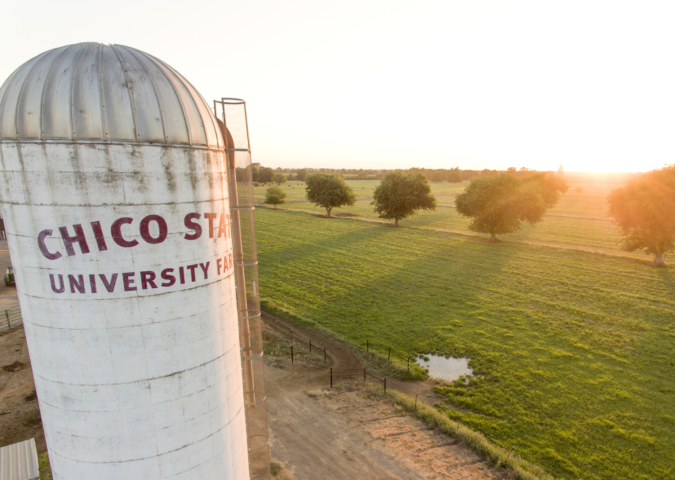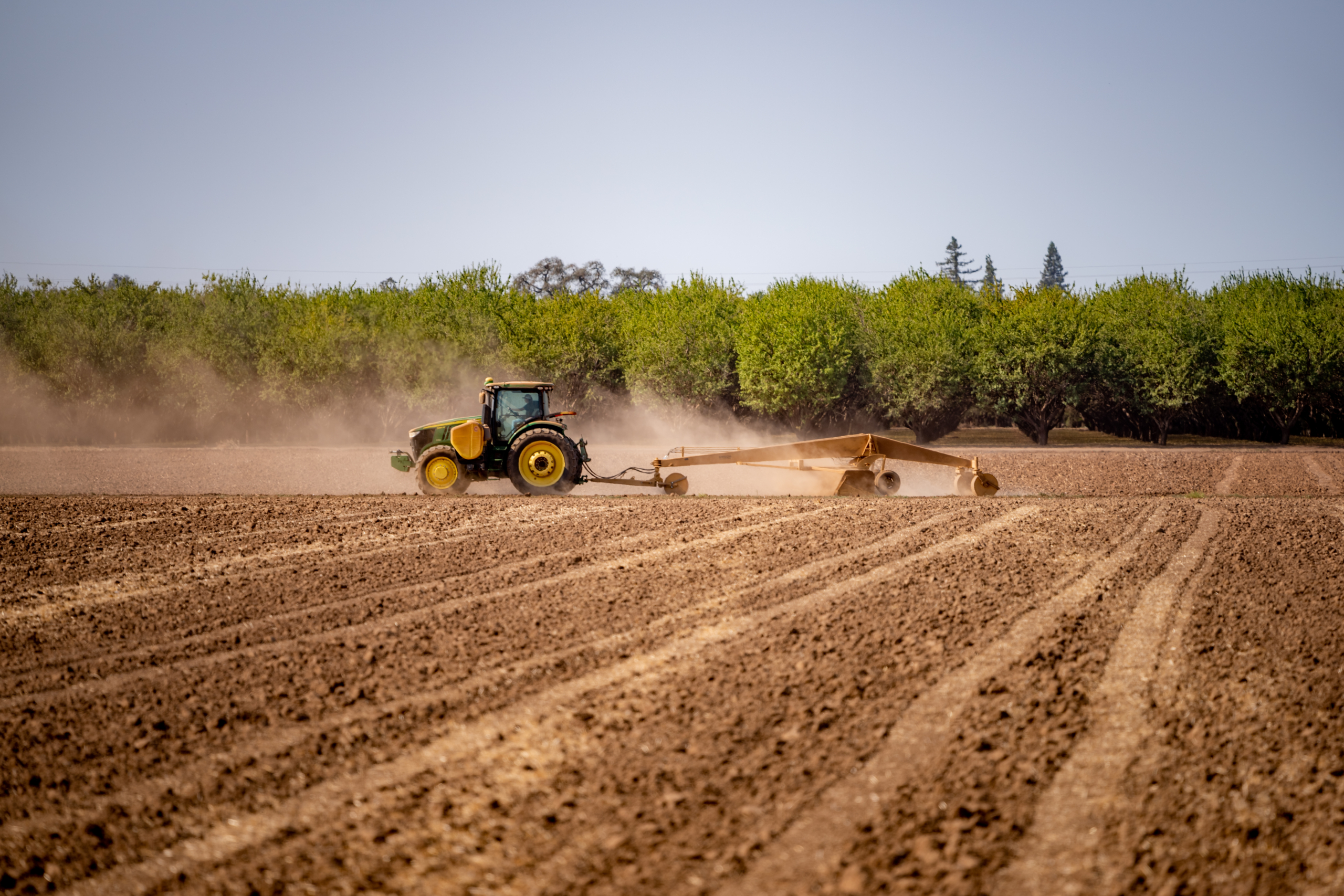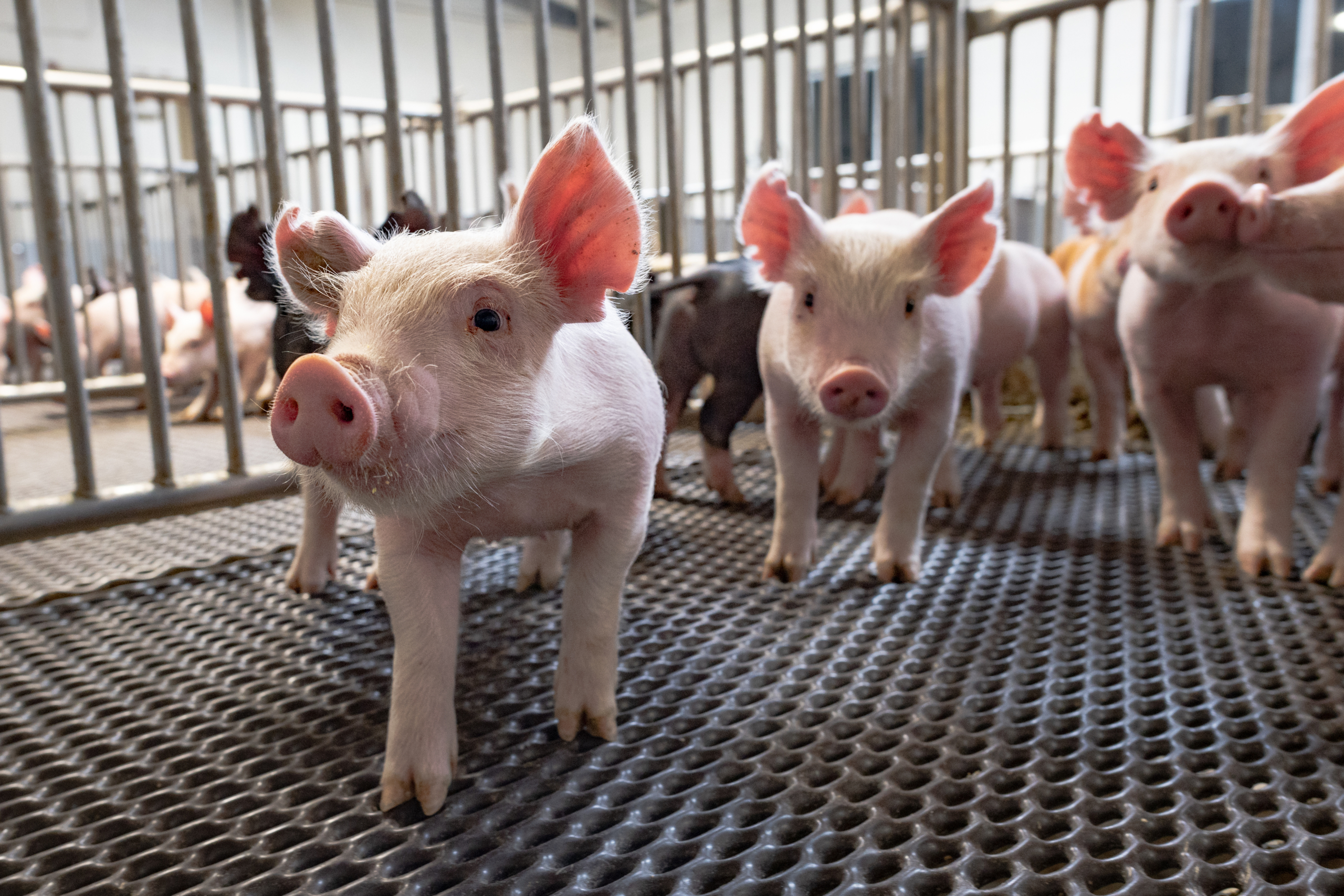University Farm Celebrates 60 Years of Hands-On Learning

An aerial perspective of the University Farm is seen from a drone during sunset on Monday, July 23, 2018 in Chico, Calif. (Jessica Bartlett/University Photographer/CSU Chico)
For 60 years, the Paul L. Byrne University Farm has operated as both a living laboratory and training ground to power our agricultural future. Today, its 800 acres remain a microcosm of a major industry and its essential workforce.
California’s agricultural production nearly doubles that of the second-largest agricultural state, Iowa, with more than $50 billion in agricultural receipts in 2019. The Golden State’s farmers and ranchers grow more than 400 commodities on 25.5 million acres, making it the fifth-largest supplier of food to the world.
Such agricultural prominence—especially within the University’s service area—is what rooted the farm’s beginnings more than a half-century ago. In the early 1950s, a five-year study of high school seniors in Northern California revealed agriculture was the greatest academic and vocational area unserved by Chico State.
When the fledgling agriculture department moved to a ranch south of Chico in April 1960, it was the culmination of more than three years of effort by faculty, staff, industry leaders, and especially State Senator Paul L. Byrne, who secured more than $1 million in state funding for the purchase and development of the Chico State farm.

Today, the University Farm remains one of just four farms within the California State University system, in addition to Fresno State, Cal Poly Pomona, and Cal Poly San Luis Obispo.
What makes Chico State’s farm truly unique, farm manager Dave Daley (Agriculture, ’79) said, is it capitalizes on some of the most fertile soils in the world to provide a broad scope of offerings on a singular site.
“We have so many things in one location, it is an exciting opportunity to engage students in experiential learning,” he said. “You can move from a beef pasture to a walnut orchard quickly. Whether you are focused on irrigation methods or soil management or what kind of insects are out there, you get it all and it’s a relatively short walk.”
Hundreds of students within the College of Agriculture engage with the farm in some way each semester, whether it’s attending lab classes, working as a full- or part-time employee, or living on site to care for the crops and livestock. Opportunities for learning are endless. Some propagate plants with its Greenhouse Unit for public sale and the Hungry Wildcat Food Pantry, while others butcher livestock or make sausage in the USDA-certified Meats Lab. A number assist with research on cover crops or soil resiliency, and many more support the production of lambs and pigs for 4-H and Future Farmers of America projects.
“It’s important to show students the integration of agriculture, while also helping students who aren’t quite sure where they are going,” Daley said. “They may start as an animal science major and fall in love with plants, or vice versa. It gives them a great exposure.”

Unlike a half-century ago, nearly half of today’s students are Latinx—a 34 percent increase since 2016—and about two-thirds are women. Additionally, many students no longer come from farming families.
“Although they may lack experience, these students all bring new perspectives and a fresh energy to the field,” Daley said.
Agriculture, too, is changing.
In some respects, the work has grown physically easier, with advances in tools and technology, but in other ways it is more challenging, with debates about conventional versus organic farming methods, competition for products, and increasing regulation and wages.
“Our job is to evolve with that and to ensure we give students a variety of experiences,” Daley said. “At the same time, I don’t want to lose that touch—where you are there, you planted it, and you watched it grow.”
In doing so, the farm prepares students for a broad range of careers, just as it has done for generations and aspires to do so for another 60 years or more. With all it offers, its alumni are finding success ranging from roles at boutique farms to family businesses to international firms.
“Our job is not to say what is more important. They all have a spot,” Daley said. “Our job is to give students a breadth of exposure and enough information so they can choose what makes sense to them.”
As the University Farm looks toward the next 60 years and beyond, we are excited to build a new farm store and educational center that will further hands-on learning opportunities and support our farmers and community. With your support, we can raise enough funds by 2022 to make this vision possible.
Turn your gift into impact at www.csuchico.edu/ transformtomorrow.


